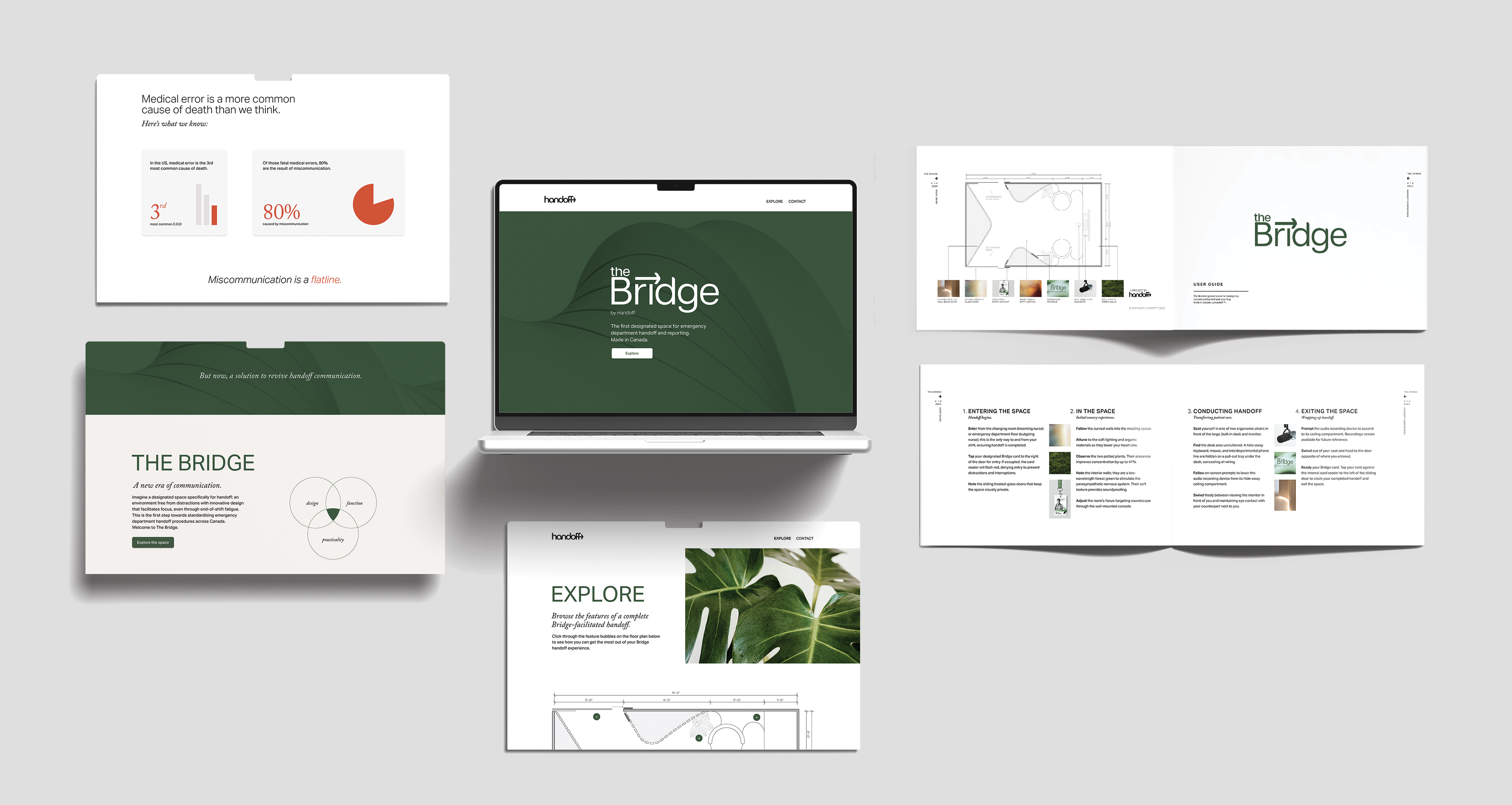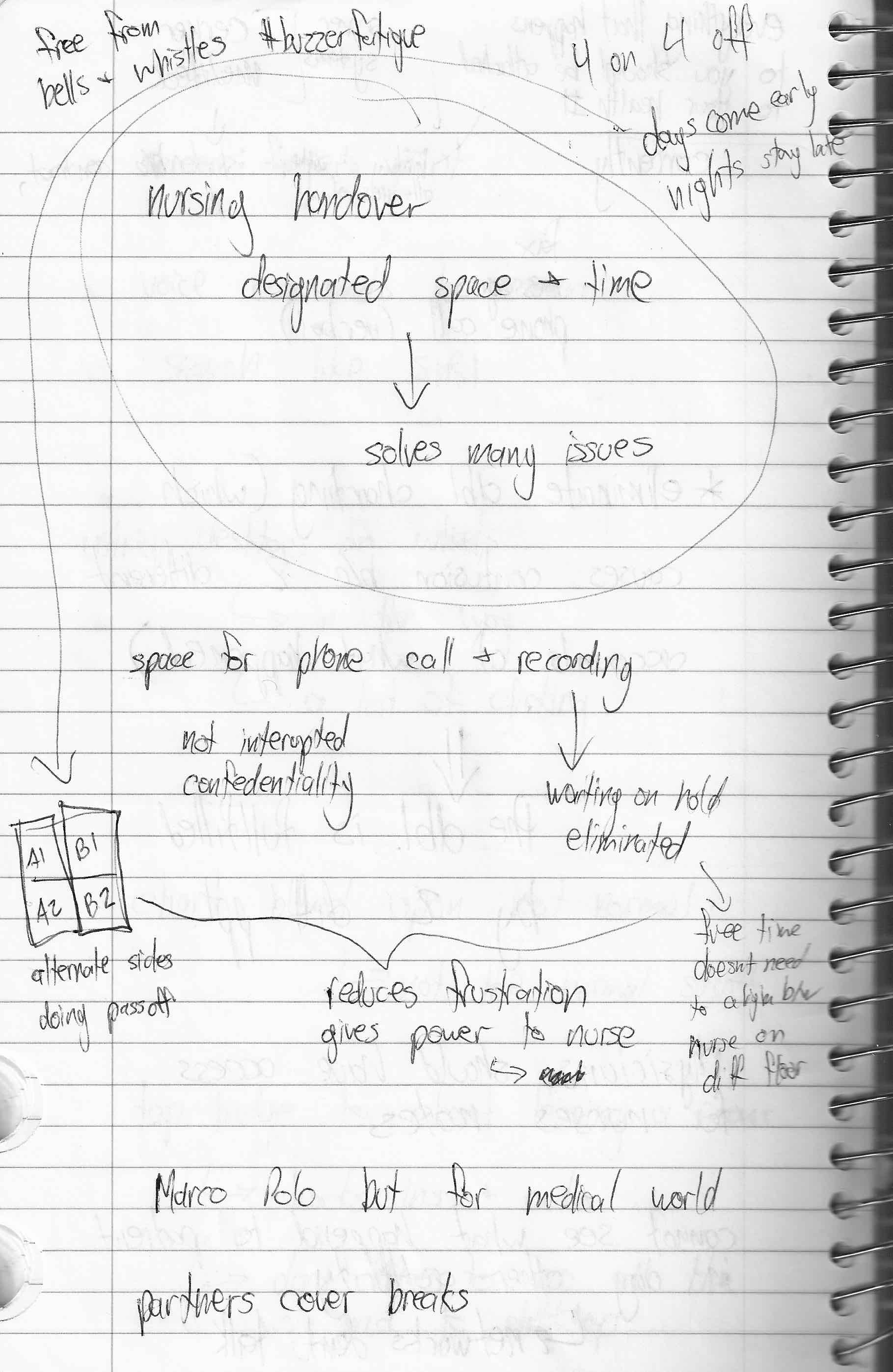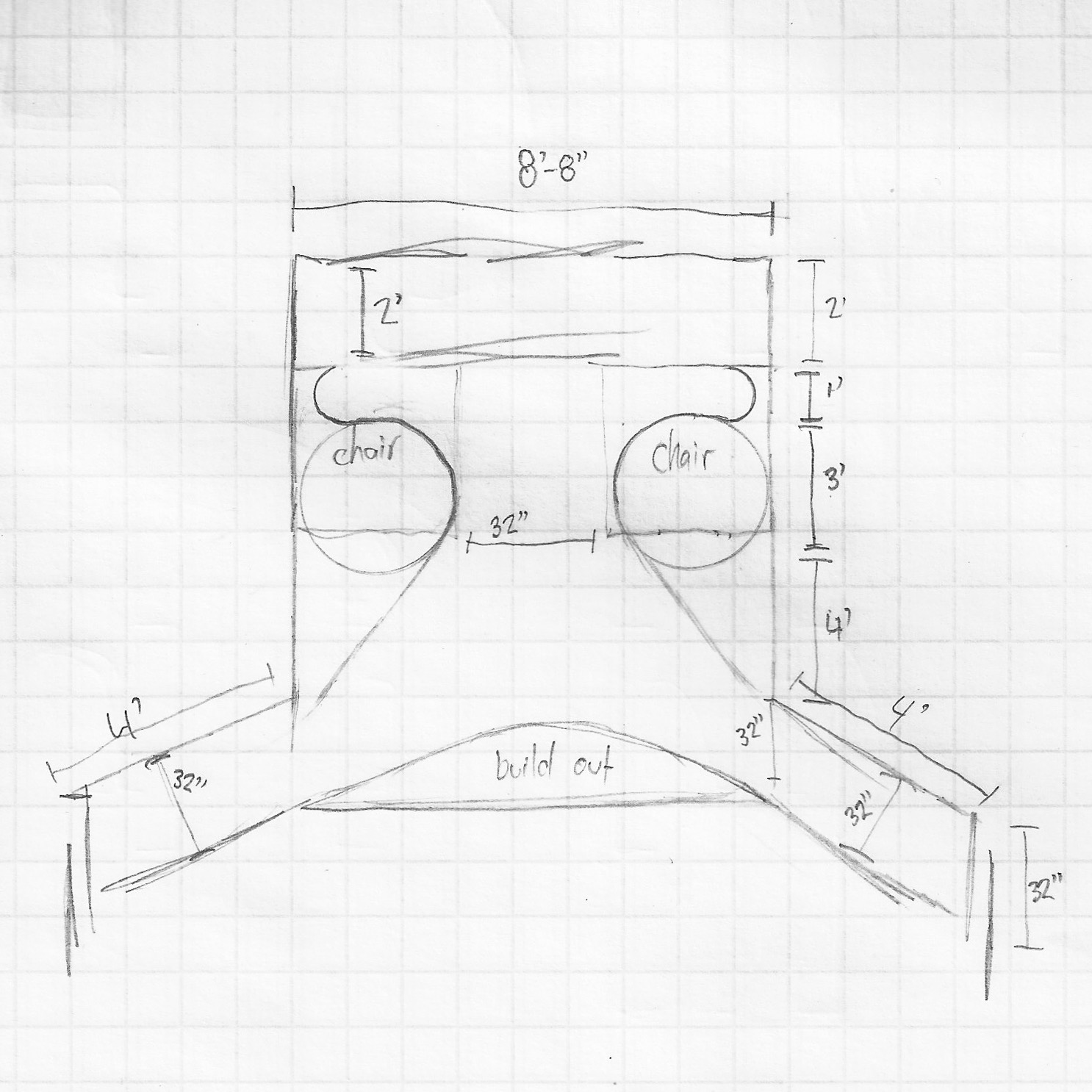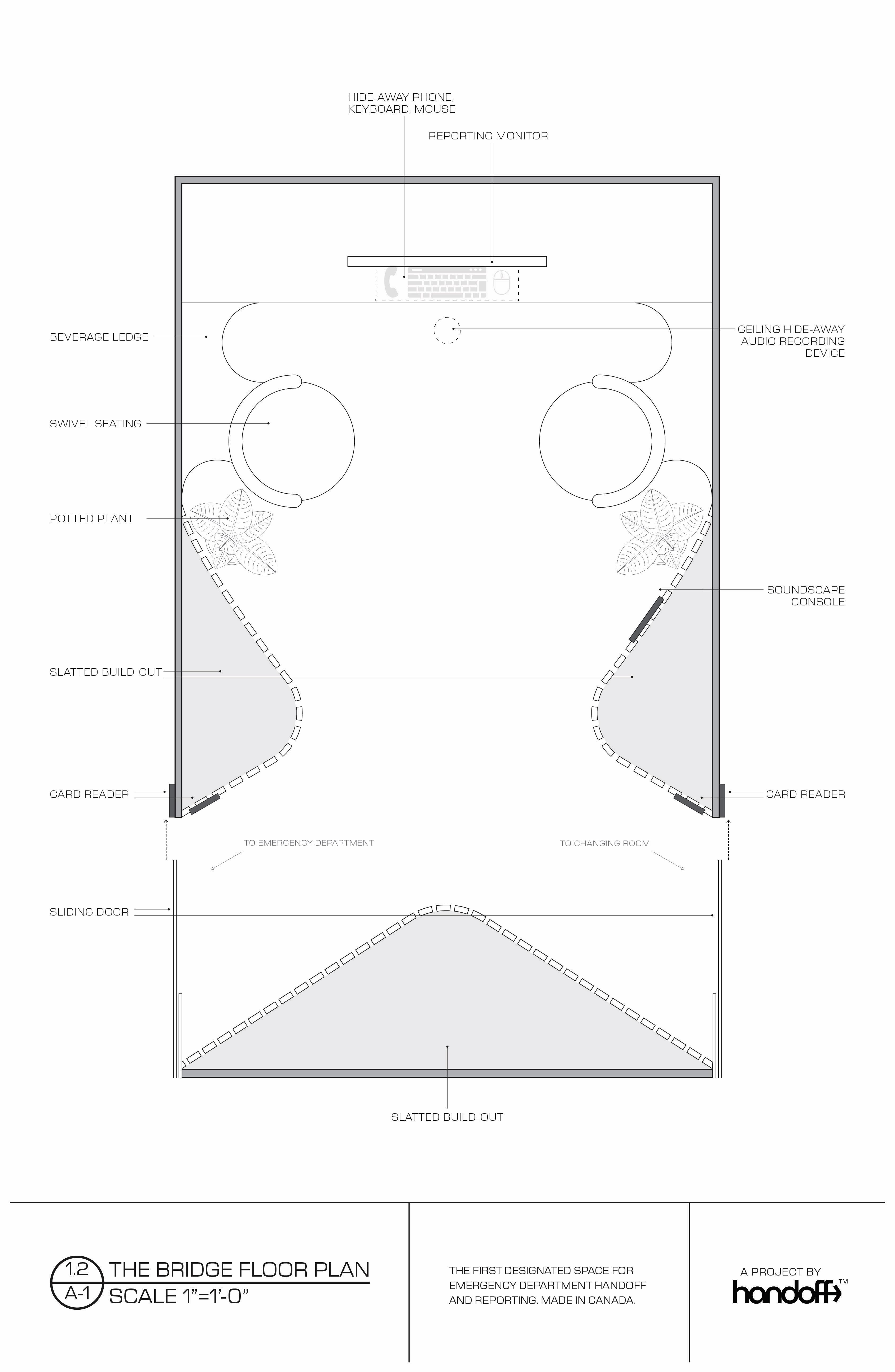context: culmination of upper-level design courses, Vancouver Island University
research; art direction; ui/ux; experiential design; branding & identity; publication design; pitch & presentation; Adobe InDesign; Adobe Illustrator; Adobe Photoshop; Figma
Role
Designer, Co-Art Director
Year
2024-2025
Though not broadly spoken about, medical error is a common, even leading, cause of death across many healthcare systems. Studies cite that 80% of these medical errors are caused by miscommunication amongst healthcare professionals.
The Bridge is an experiential response to this issue; a space designated for handoff procedures. Here, nurses and physicians can prioritize communication, free from the many distractions and interruptions of the ER environment.
Designed elements of the solution include a website, nurse orientation materials, detailed floor plans, and collateral for the space and user.











